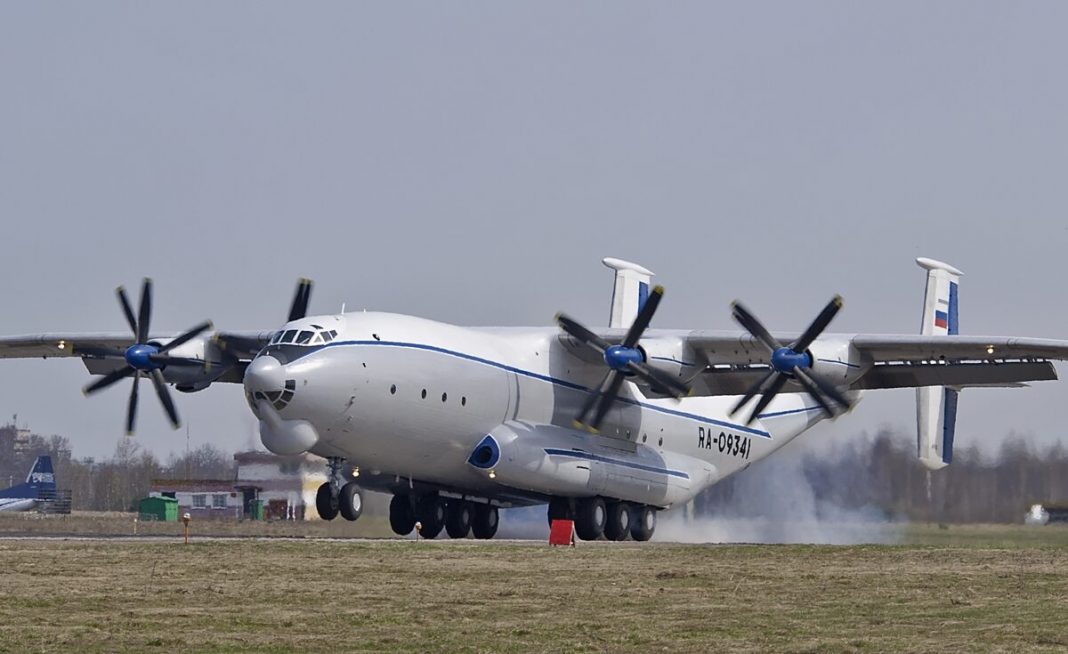Did you know that the world’s largest turboprop aircraft is still in active use? The Antonov An-22 “Antei” is used exclusively by the Russian military and is an impressive aircraft. Why was it built, and what can it do? Let explore.

Why was the Antonov An-22 built?
Back in the USSR in the 1950s, the Soviet military required a new aircraft to help transport infantry, humanitarian aid, and its new range of BMD tanks. The current plane for this purpose was not big enough, and they needed something to remain competitive to the west.
Thus the engineers at the Antonov bureau got to work and produced a wooden prototype by 1965. It was so impressive that officials decided to show it off at the Paris Air Show that very same year.
The actual production model of the aircraft would not fly until 1969. It would replace the wood with metal and would install more up to data avionics. Improvements included a radar installed in the nose and would also have a pressurized cargo compartment (so the plane could deploy airdropped cargo in flight without affecting the cockpit crew).
Stay informed: Sign up for our daily aviation news digest.

What are its specifications?
The An-22 had the following specifications:
- It could carry 28–29 passengers and 80,000 kg (176,370 lb) maximum payload to a range of 5,000 km (3,100 mi, 2,700 nautical miles). If only carrying 45,000 kg (99,208 lb) it can fly a range of 10,950 km (6,800 mi; 5,910 nautical miles).
This is a pretty fantastic range considering the size and the scale of the aircraft.
What is unique about this aircraft is that they designed it to land on rugged unpaved airstrips (and short runways). To put this in perspective how insane this is, let’s compare it to the American C-17 Globemaster:
- The An-22 needs 1,300 m (4,265 ft) of runway to take off and only 800 m (2,625 ft) to land.
- The C-17 needs a runway 2,499 m (8,200 ft) to take off fully loaded, and at least 1,067 m (3,500 ft) with maximum payload.
The aircraft has counter-rotating propellers, thus dramatically improving the lifting capacity of the plane. However, these propellers significantly reduce the speed of the aircraft to only 740 km/h (460 mph, 400 knots) compared to jet engines.

It was able to adjust the tire pressure of each wheel depending on the surface (be it concrete, gravel, dirt, or even snow). While more modern aircraft have removed this feature, the early versions of the An-22 had this as a mandatory feature for its military use.
Back in the 1960s, they were comparable to the Douglas C-133 Cargomaster – and American large four-engine turboprop cargo aircraft. When the US military phased out that airplane, the next plane it matched to was the Boeing C-17 Globemaster III – a four-engine military transport aircraft.
The Russian government only has three An-22’s left in service (and there is one in Ukraine and one in Bulgaria) but isn’t planning on retiring them any time soon. They want to keep them operational to at least 2033, and then replace them with the bigger An-124.
What do you think? Would you fly on this aircraft? Let us know in the comments.
[ad_2]
Source link


